Cash and Voucher Assistance: What is CVA?
What is CVA? How is CVA delivered? What are the benefits of CVA? We answer key questions about humanitarian cash and voucher assistance.
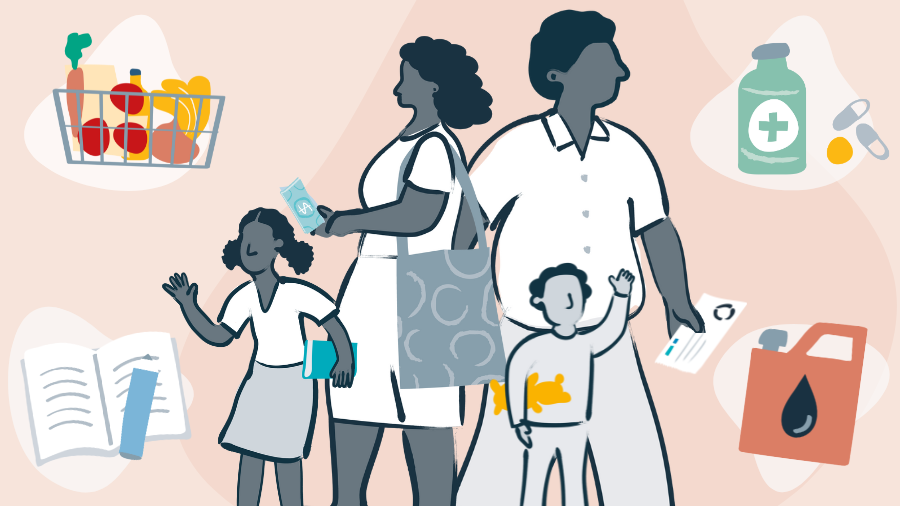
What is Cash and Voucher Assistance (CVA)?
Cash and Voucher Assistance (CVA) is a type of humanitarian aid where cash or vouchers are given to people affected by crises. Unlike material assistance, such as food or blankets, it allows people to buy goods and services for themselves, based on their own needs and preferences.
There are two types of CVA: cash and vouchers.
- Cash is when physical or digital money is given to individuals, households, or a group/community affected by a humanitarian crisis. Cash is an unrestricted form of aid as people can use the money to buy whatever goods or services they need.
- Vouchers are paper or electronic tokens that can be exchanged for a set value (e.g., $20) or amount (e.g., 5 kg) of goods, or specific services (e.g., milling of 5 kg of maize). There are different types of vouchers – value vouchers and commodity vouchers. Vouchers are not as flexible as cash, as they are restricted to only being exchanged at selected vendors for certain products and often have a time limit.
Some programmes might attach conditions to either type of CVA to help achieve certain response objectives. Conditional cash transfers or vouchers require recipients to carry out an activity to receive assistance, such as attending a nutrition screening or clearing debris. Cash for work is a type of conditional cash assistance.
On the other hand, Unconditional cash or vouchers are provided to people (who meet the programme eligibility criteria), without them needing to do anything.
Multipurpose cash assistance (MPCA) is a type of cash transfer that is specifically designed in a way to meet the multiple needs of an individual or household – and the value is calculated with these needs in mind.
The CALP glossary has detailed definitions of these and many other CVA terms.
To find out more, visit Types of Cash and Voucher Assistance on Cash 101.
The purpose of cash and voucher assistance
The purpose of humanitarian cash and voucher assistance is to support people affected by a crisis.
CVA allows people to decide how to provide for themselves and supports their autonomy in recovering from a crisis. For example, one family might need medicine for a sick grandparent, but another might need a specialised diet for a child. Depending on the design of the cash and voucher assistance, the assistance might be totally flexible or there may be some conditions and restrictions.
Here are a few examples of why different types of CVA might be used:
- Vouchers might be provided to encourage more consumption of nutritious foods, like vegetables and milk.
- An unconditional cash transfer might be provided to help rebuild a business following a disaster.
- A conditional cash transfer might be provided to encourage people to visit a health centre for pre-natal screenings.
- A cash for work grant might be provided to several people in the community to clear debris from roads to improve access after a crisis.
It is important to recognise that humanitarian situations differ and CVA might not always be the most appropriate type of aid for a response. For example, if there is a lack of appropriate goods in the local markets, or markets are not safe or easy to access, other types of aid might be more suitable. The needs and preference of the people affected as well as the overall context, all need to be considered when designing a response.
How is CVA delivered to people?
CVA can be delivered in two main ways:
- Physically, such as cash in hand (a direct payment to a recipient in physical currency) or physical vouchers, tokens or stamps.
- Digitally, through a mobile phone, a pre-paid debit card, or other types of digital transfer. E-cash transfers will usually provide the option to withdraw funds as physical cash if required using a code. An e-voucher might be provided as a card or code sent to a recipient’s mobile phone.
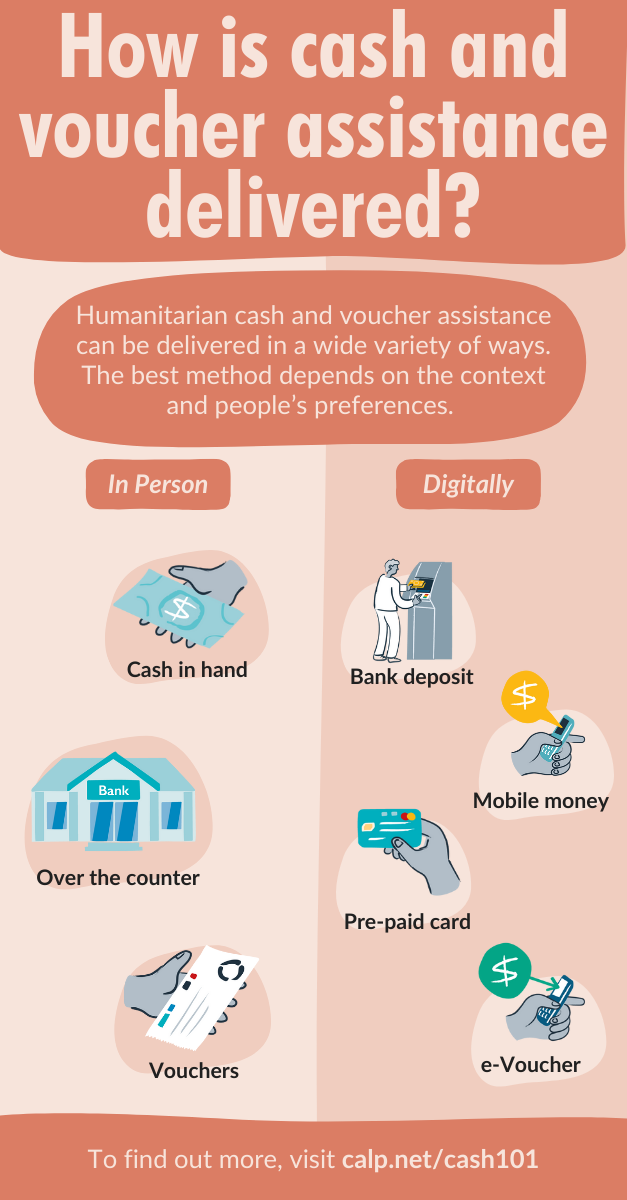
If suitably designed, digital CVA has several advantages over other forms of aid, such as:
- Speed: recipients can meet their basic needs quickly.
- Direct: a transfer to a mobile phone or ATM eliminates the need to spend time in long queues to be given physical cash or goods.
- Safety: Some in-kind aid recipients have complained about the security challenges faced at distribution points.
Yet recipient preferences, their digital literacy, and how they will use the cash are all considerations that might affect the delivery method selected. This should be tailored for a specific context and, to the extent possible, individual preferences.
Who delivers cash and voucher assistance?
There is a chain of actors involved in the delivery of humanitarian CVA:
- Large agencies, such as the UN or international NGOs deliver the majority of CVA. In 2022, 66% of all CVA was provided by UN agencies, followed by NGOs and the Red Cross and Red Crescent (RCRC) Movement at 23% and 20% respectively. There are over 90 CALP Network members, who between them deliver the vast majority of CVA worldwide.
- Implementing partners: Big agencies often contract smaller NGOs and local partners to implement CVA programmes. Unfortunately, there is a lack of data on indirect humanitarian funding to local and national actors, limiting visibility on their contribution to CVA delivery.
- Financial service providers (FSPs) such as money transfer operators, remittance companies, banks, post offices and their payout agents are also part of the process – usually responsible for the actual transfer the money to the recipients.
In order to fully realised the benefits of cash and voucher assistance, agencies must take good design and delivery into account:
Discover more about CVA delivery in the cash 101.
The growth of CVA and major milestones
In recent years, the total amount of CVA and has rapidly grown. In 2022 funding for CVA reached $7.9 billion – This is an increase from $5.6 billion in 2021. In terms of the percentage share of CVA international humanitarian assistance CVA makes up about one-fifth of total humanitarian assistance. CVA made up an estimated 20% of international humanitarian assistance in 2022 – this is only marginally higher than in 2021 (18%).
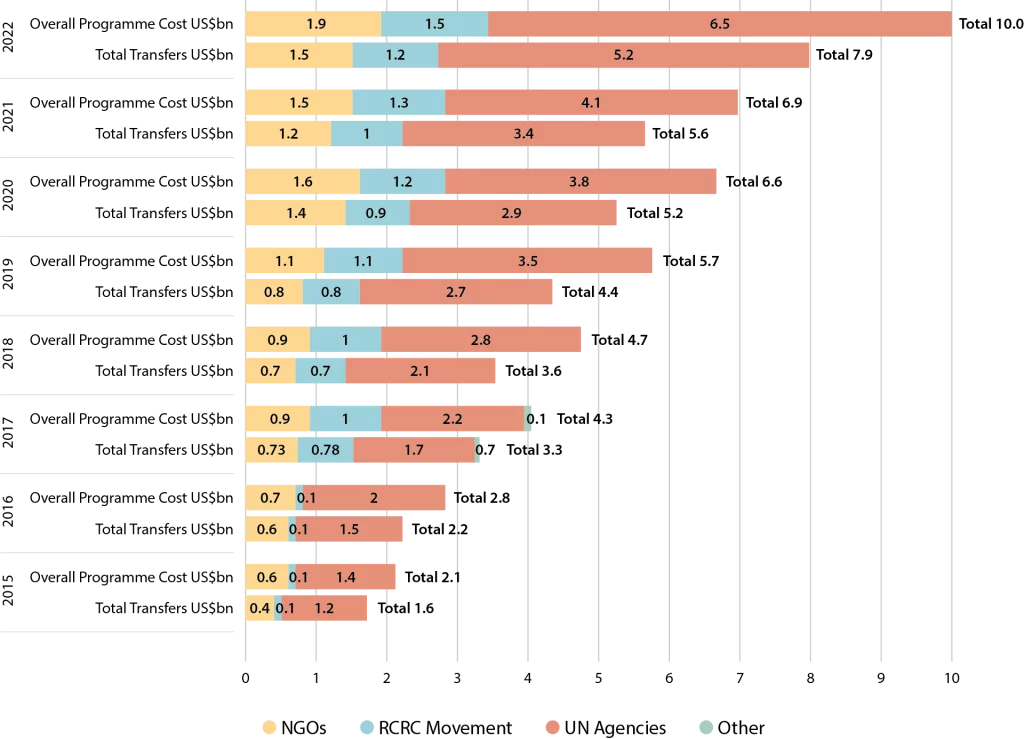
In 2022, the biggest provider of humanitarian cash and voucher assistance was the UN and its partners, delivering 66% of all CVA. Roughly three-quarters of all CVA was delivered as cash, with one quarter as vouchers.
The growth of CVA has been partially attributed to the commitments made in 2016’s Grand Bargain. This global agreement between humanitarian donors and agencies sought to make humanitarian aid more efficient to meet the needs of people in crisis. Increasing cash and voucher assistance was identified as one of the ten key priority areas.
In 2022, global actors agreed on a new cash coordination model, addressing one of the key challenges preventing the scaling up of CVA.
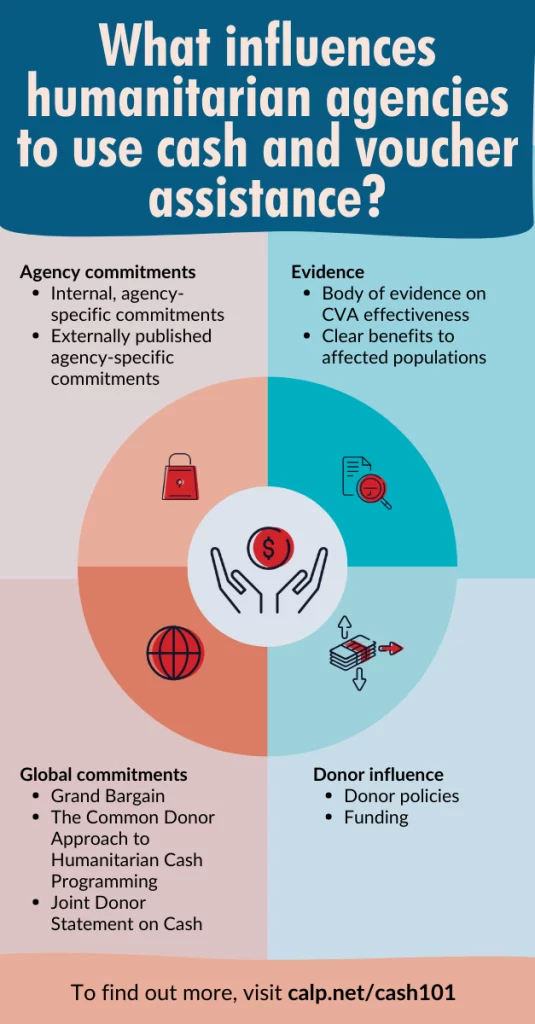
What are the benefits of CVA?
In the right circumstances, CVA can be efficient, effective, and better for people affected by crises than in-kind aid.
Benefits of CVA include:
- CVA allows people to meet their own needs: CVA allows people to buy the food or goods they need and empowers people to address their priorities. It is a more dignified form of assistance, respecting people’s decisions about how they use the resources to start their own recovery.
- In most crises, people prefer CVA over other forms of assistance. For example, according to key informants in Yemen, 90% to 100% of households said they prefer CVA.
- CVA is often more cost-effective. CVA can be cheaper than in-kind aid due to the reduced costs of sorting, transporting and delivering physical goods to crisis affected areas. This can make limited aid budgets go further. In 2015, a WFP project in Ethiopia found cash was more efficient than food aid by 25%-30%.
- CVA benefits the local economy: CVA can support local businesses recover following a crisis. Recipients spend their cash or vouchers with local traders, who then in turn spend their extra profits on local businesses. Giving goods can harm local businesses by reducing demand for what they’re selling. One study showed that for every unrestricted dollar of direct giving, CVA can create $2 of value in local economies.
- CVA indirectly contributes to the transformation of the entire humanitarian system. CVA is challenging the traditional humanitarian model and encourages new opportunities to work with new partners and tools. CALP and IARAN’s Future of Financial Assistance report identified various reforms CVA is driving in humanitarian assistance, such as the push for localisation, connections with social protection, improved data protection, and building relationships with the private sector.
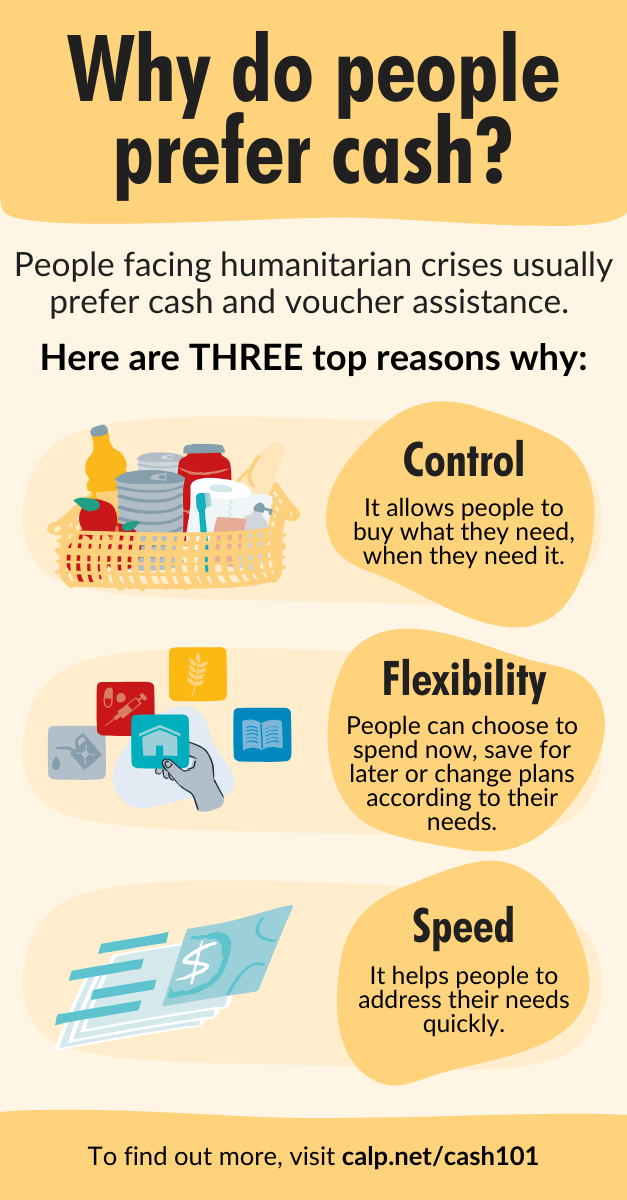
Find out more about the Benefits of CVA, explore Cash 101, or take our free, online CVA Fundamentals course. To receive regular updates, sign up for CALP’s newsletter.